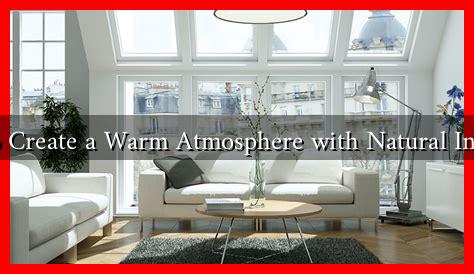-
Table of Contents
How to Create a Warm Atmosphere with Natural Interiors
In an age where urban living often leads to sterile environments, the desire for warmth and comfort in our homes has never been more pronounced. Natural interiors, characterized by the use of organic materials, earthy colors, and biophilic design, can create a welcoming atmosphere that promotes well-being. This article explores effective strategies to cultivate a warm ambiance through natural interiors.
Understanding Natural Interiors
Natural interiors focus on incorporating elements that reflect the beauty of the outdoors. This design philosophy emphasizes sustainability, comfort, and a connection to nature. According to a study by the National Institutes of Health, exposure to natural elements can significantly reduce stress and enhance mood. Here are some key components of natural interiors:
- Natural Materials: Wood, stone, and organic textiles.
- Earthy Color Palettes: Warm tones like browns, greens, and soft neutrals.
- Biophilic Design: Incorporating plants and natural light.
1. Embrace Natural Materials
Using natural materials is fundamental to creating a warm atmosphere. Wood, for instance, adds warmth and texture to any space. Consider the following:
- Wooden Furniture: Opt for pieces made from reclaimed or sustainably sourced wood.
- Stone Accents: Incorporate stone elements in countertops or decorative features.
- Textiles: Use organic cotton, linen, or wool for curtains, cushions, and rugs.
For example, a living room with a reclaimed wood coffee table, linen curtains, and a wool rug can create a cozy and inviting space. A case study by the Houzz platform found that homes featuring natural materials were perceived as more welcoming by visitors.
2. Choose an Earthy Color Palette
The colors you choose can significantly impact the mood of your space. Earthy tones evoke a sense of calm and comfort. Here are some tips for selecting a color palette:
- Warm Neutrals: Shades of beige, taupe, and soft grays can serve as a perfect backdrop.
- Accent Colors: Incorporate deep greens, rusts, or muted blues for a pop of color.
- Natural Light: Maximize natural light to enhance the warmth of your chosen colors.
For instance, a room painted in soft beige with deep green accents can create a serene and inviting atmosphere. A survey by Color Psychology indicates that warm colors can evoke feelings of comfort and safety, making them ideal for living spaces.
3. Incorporate Biophilic Design
Biophilic design focuses on creating a connection between indoor spaces and nature. This can be achieved through various means:
- Indoor Plants: Use a variety of plants to improve air quality and add life to your interiors.
- Natural Light: Maximize windows and skylights to bring in sunlight.
- Water Features: Consider small indoor fountains for soothing sounds and humidity.
Research from the Frontiers in Psychology journal shows that incorporating plants in interior spaces can reduce stress and enhance creativity. A well-placed fern or a flowering plant can transform a sterile room into a vibrant oasis.
Conclusion
Creating a warm atmosphere with natural interiors is not just about aesthetics; it’s about fostering a sense of well-being and comfort. By embracing natural materials, choosing an earthy color palette, and incorporating biophilic design, you can transform your living space into a sanctuary that reflects the beauty of nature. As we continue to seek comfort in our homes, the principles of natural interiors offer a timeless solution that resonates with our innate desire for warmth and connection.
In summary, remember to:
- Utilize natural materials for warmth and texture.
- Select earthy colors to create a calming environment.
- Incorporate biophilic elements to connect with nature.
By implementing these strategies, you can create a home that not only looks beautiful but also feels inviting and warm.

